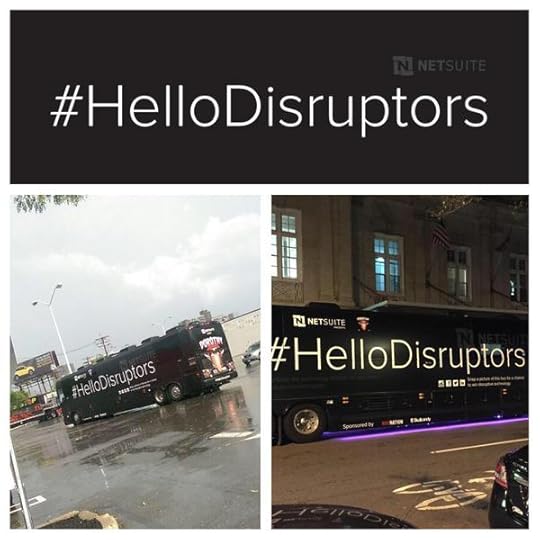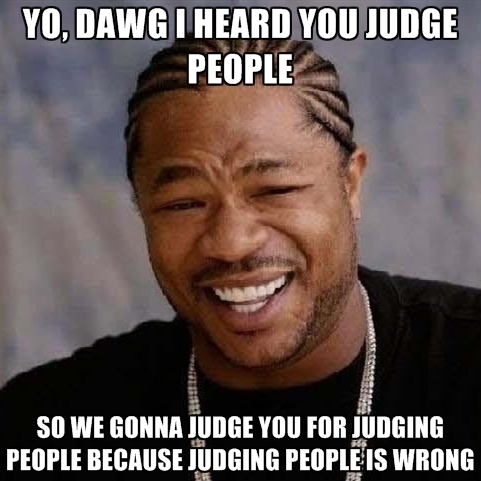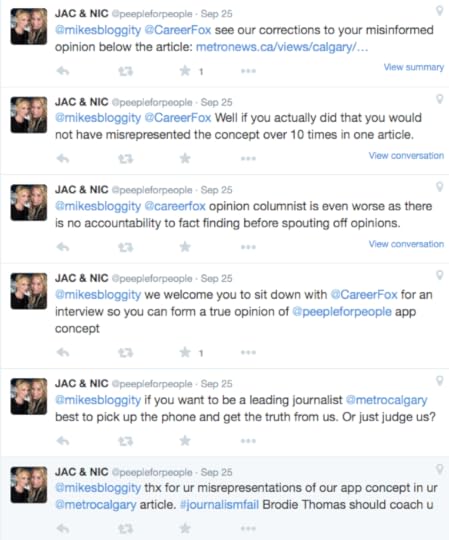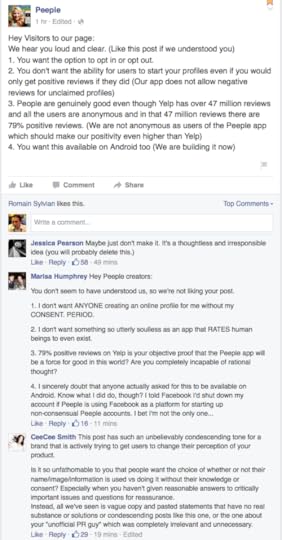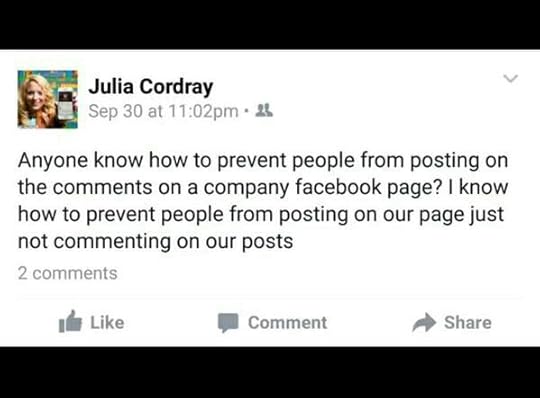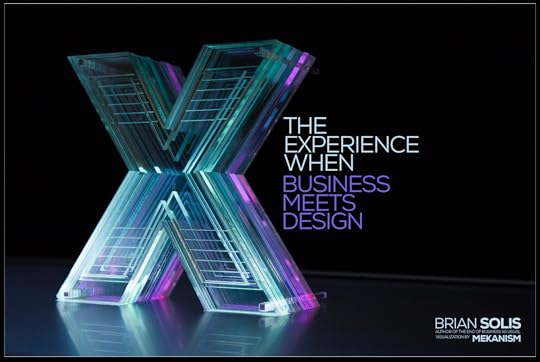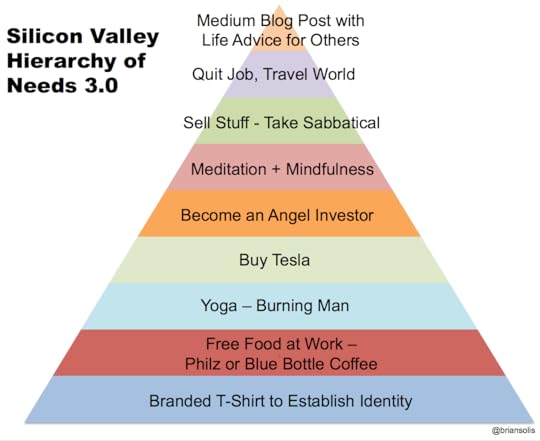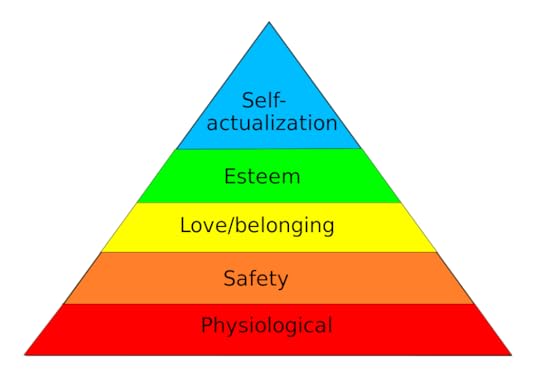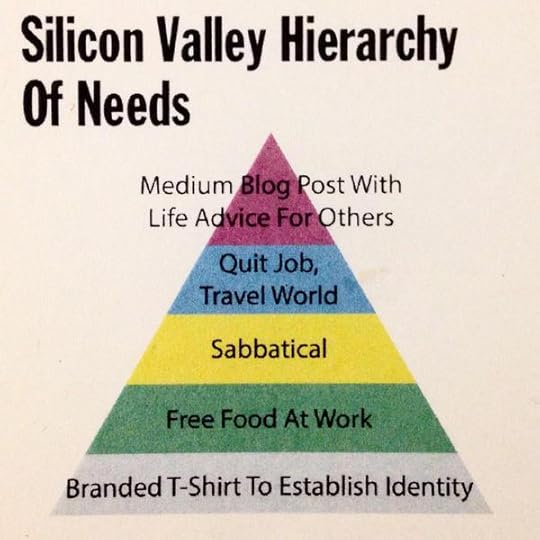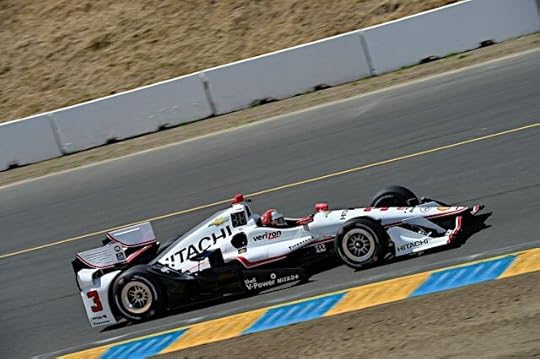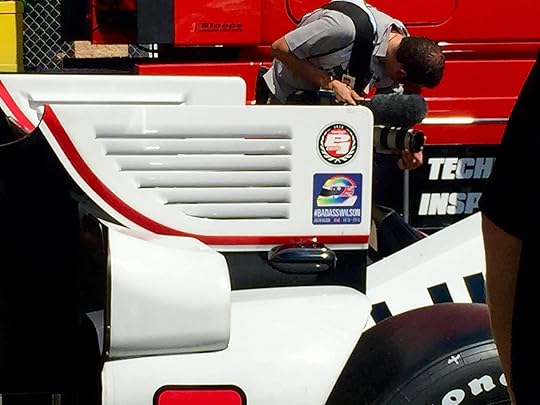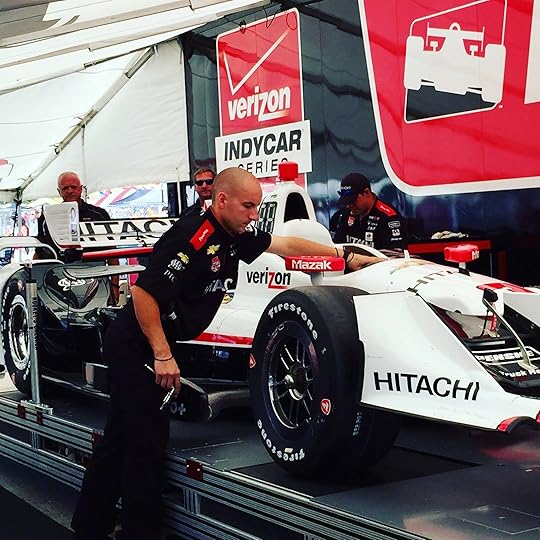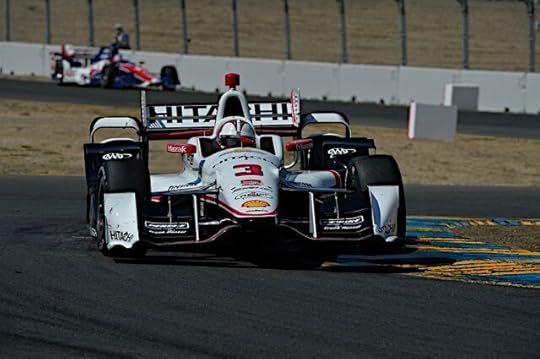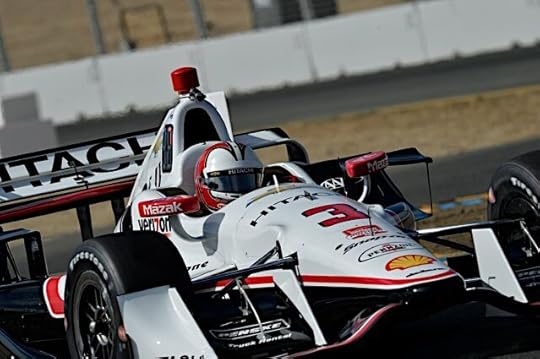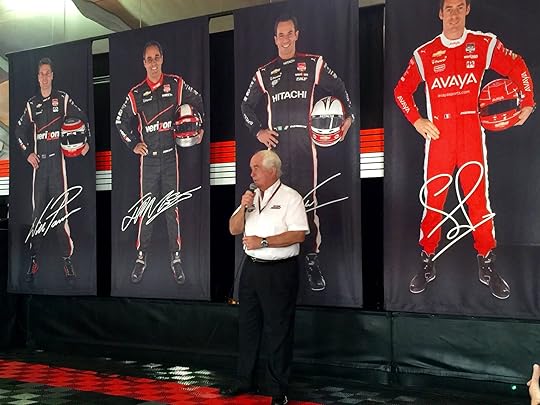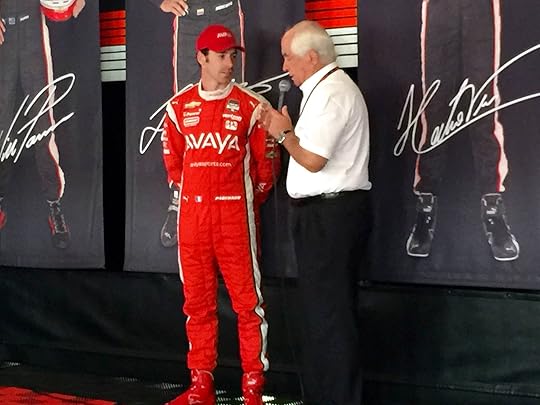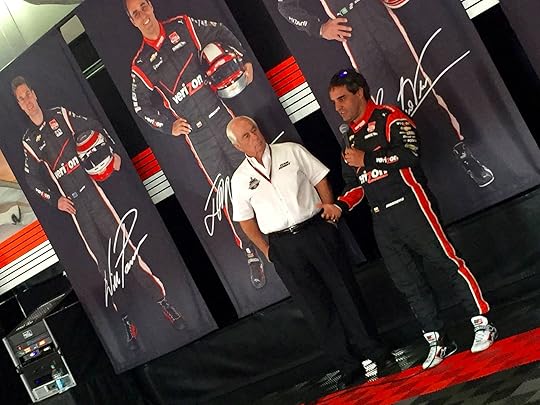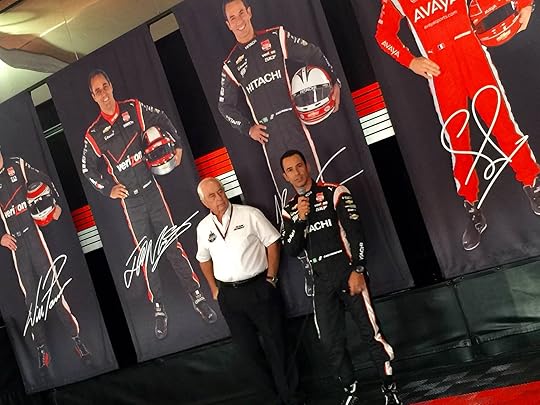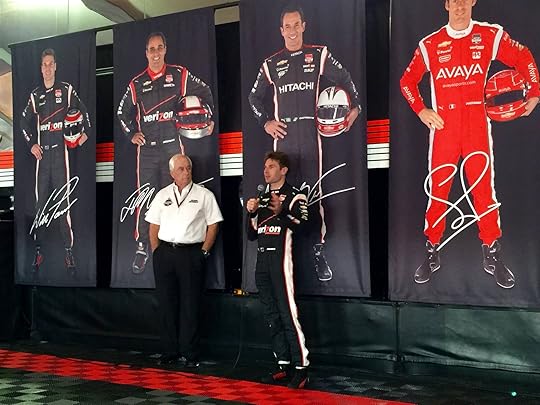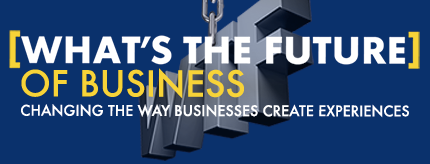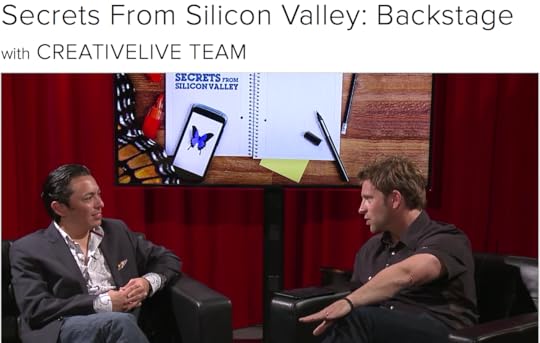Brian Solis's Blog, page 99
October 6, 2015
Marketing to Marketing to Reimagine Marketing
Guest post by Fred Studer (@fredstuder), Chief Marketing Officer at NetSuite
Sometimes, in fact oftentimes, the most important audience for your message are the people who are already working for you.
In an age of online surveys and instant feedback across social channels, articulating your message to the people who work in your company can often be neglected. In fact, if you haven’t convinced and energized your own people, you’re going to be hard pressed to convince the market.
My early marketing days were working with Larry Ellison at Oracle and one of his key philosophies was that marketing wasn’t just for people outside the company but rather for our teams within the company so that they understand what we are selling, how to discuss it and differentiate it. That goes for the marketing team as well.
Marketing is about asking people to believe what we’re saying at scale. We need to be convinced enough about what we do in order to tell them why we’re so great. The most powerful method is by having everyone authentically understand and believe in the brand promise. Then you no longer have to market, you get a chance to create a movement through your best advocates, your employees.
Take our recent NetSuite campaign #HelloDisruptors for example. The campaign features NetSuite customers who are disrupting their industry, businesses like Lyft, FitBit and Alton Lane. We’re integrating that with social media, and the really cool part, a rock ‘n’ roll tour bus. We’re working with Dorothy (@itsdorothysucka), one of the kick-ass guest bands from our SuiteWorld user conference in May, outfitting their tour bus, encouraging people to take pictures of the bus and asking them to post those images to social media for a chance to win giveaways from our awesome customers disrupting their industry.
It got us a three-way win. First, it showcased internally what fresh marketing looks like and some of the new things that we want to do here at NetSuite. Secondly, we wanted to make this about real customers, not just logo slathering, but something authentic and exciting. And nothing is more exciting than a rock ‘n’ roll around the city and cool prizes. That gives people a chance to take a second look at NetSuite and say, “maybe I don’t know them as well as I thought.”
Third, we hit one of our core tenants of storytelling. Humans want to tell stories. We are creatures that like to do things around social needs. We started sitting around campfires cooking food, telling stories, then we started the art of music.
And that’s a key point here. You can’t assume your internal audiences will understand your message. Many will without any prodding but getting everyone on the same page and motivated is paramount.
Let’s face it, much of NetSuite’s history is focused around accounting software. Not necessarily an obviously sexy topic, but as it turns out it is VERY sexy. We’re the platform of choice for some very cool, very disruptive businesses. The chance to highlight these disruptive companies, along with some disruptive voices in the market was a great way for our team to puff their chest up a little bit.
If your own team isn’t excited and proud, it’s hard to expect the same from your customers. And, as I’ve said in this space before, if we make a difference for our customers, they, in turn, will market us to their own customers. Then marketing becomes more focused on community building and helping to inspire members of that community to engage with their peers.
Being able to activate that army of people with that passion of conviction, that is when you get this epic wave – it becomes an obligation, not just an opportunity.
Yes, establishing that conviction can be a challenge. It’s a process, much like a habit. Habits aren’t just hard to kick, they’re hard to establish. No one says, “I can’t wait to start flossing.” Establishing a habit of conviction in your company, your product, your movement demands positive reinforcement. We’re reinforcing the great stories of our customers with #HelloDisruptors.

October 1, 2015
The New Peeple App Does Not Represent People; Stop This App Before It’s Released
“Character is destiny.” This is the ironic tagline for Peeple (I’m not linking to it), a new app that wants to be the “Yelp for people” allowing anyone to rate you “professionally, personally and romantically” as long as they have 1) a Facebook account, 2) your phone number and 3) that they’re a real person.
I’m not kidding. This is a real app that is one-to-two months away from impacting your social, professional and dating graphs all because two enterprising entrepreneurs are confusing capitalism and privatism. Even as I write this, I can’t help but wonder if we’re all being trolled. The concept is just that absurd. It’s almost unbelievable that this is just another attempt at ranking people with each failing due to public backlash. The problem here is part entrepreneurial shortsightedness and also the shameless investors who pour money into these ventures.
There’s already a Change.org petition to stop the release of the app.
So, if character is destiny, it is certainly rooted in legacy. Borrowing from John Wooden, “character is about who you are when no one is watching.” And, we don’t need an app for character let alone who and how we are as friends, colleagues and lovers.
Yelp for restaurants is not at all the same thing as Yelp for humans. The fact that this needs explaining demonstrates the gall or the ignorance or the lack of basic human understanding (or all of the above) that co-founders Julia Cordray and Nicole McCullough appear so intent on avoiding.
In an interview with Caitlin Dewey of The Washington Post, Cordray justified the app this way, “People do so much research when they buy a car or make those kinds of decisions, why not do the same kind of research on other aspects of your life?”
Nope. It’s not even close to being the same. Not at all. We really don’t need or want an app for that.
If you want to rate someone professionally, well, go to Yelp or any number of online business-focused apps and communities. If you want to rate someone romantically, swipe left or use a dedicated dating app with an integrated review system. Even Lulu was chastised for its approach to radical transparency when it allowed women to rate only men. If you want to rate or explore reviews to understand the character or reputation of another human being AS A person, then consider how you got to that very moment and start to rethink your life goals and choices.
Everything about this app is wrong. According to the Washington Post, the app was originally supposed to scrape names automatically from Facebook, but the site’s API wouldn’t allow it — to Cordray’s visible annoyance (the video has since been removed of course). Could you imagine if the founders got their way even if for a moment before it was stopped?
“All human beings have three lives: public, private, and secret.”― Gabriel García Márquez
Blurring professional, personal and romantic reviews for anyone to see is preposterous, even if it’s comprised of only glowing reviews. The lack of context and more so consent is senseless and more so irresponsible. Having a human “score” is far worse than having an attempt at it. I’m not sure if McCullough and Cordray are simply headstrong, ignorant or oblivious to social norms and ethics but judging by how they’re reacting to the public’s reaction, there is certainly a combination of all of the above.
Even as critics provide constructive and also destructive feedback, the team does not seem to grasp why people are lashing out with such avidity. Mike Morrison writing for the Calgary Metro News published his thoughts on the app and was basically harassed by McCullough and Cordray publicly…how ironic.
The duo even tried to appeal for emotional support by publishing a quote by Theodore Roosevelt, “It’s not the critic who counts; the credit belongs to the man who is actually in the arena.”
It’s a beautiful quote. But there’s a difference between trying to do what’s right and simply trying to do something just because, well, you… The replies are priceless and symbolic. But what’s troubling is that the founders are insistent on not actually listening to the very people they’re hoping to spotlight with their app. Try considering each response “a review” of your review app…an overwhelming opposition is taking shape across the entire web.
“As two empathetic, female entrepreneurs in the tech space, we want to spread love and positivity,” Cordray stressed to the Washington Post. “We want to operate with thoughtfulness.”
If that’s true then perhaps these founders should listen as much as they’re talking…or should I say promoting. They’re currently on a media blitz raising awareness for the app. And with every new story they sell, the greater the waves of logic and humanity that crash upon them.
Here’s a short list of organized feedback for starters…
– No consent.
– Bias.
– Zero path to accuracy.
– Invasiveness.
– The objectifying of people.
– Belittling reputation with unscientific and even harmful algorithms.
– Absence of context
Rather than use these reviews to inform their decisions, like you know, the way a review app would work, McCullough and Cordray are further validated in their mission to dehumanize human character by talking around or down to its critics across the Web. This would be a good time to take a step back and rethink the purpose and approach overall. Instead, they lean on the private emails they receive as justification for their premise—even if that feedback eerily demonstrates the dangerous butterfly effect this app may wield.
Here’s one such example…
Comments by people who email us:
“Great idea! I work in the cryptocurrency space, and we have a huge need for this sort of information. Do you plan to open up an API for querying? Could we, for instance, display a person’s reputation information in one of our apps, to give our user extra info before sending payment? I’d be very interested in hearing more, and/or beta testing! ”
Ira M. thanks for your question. We have had a lot of API requests to help companies and organizations make better decisions with online purchasing such as yours. We will consider it in the future and will have a licensing agreement available to companies that want to do just that. Keep in mind that only the professional side of the app will be available for purposes such as your request.
The response is exactly how a normal person would react…
Wow. So you want to have an app that allows others to publicly judge the character of people that use it, and then allow third party companies to mine that information?
The entire thing is so strange that a parody account already exists on Twitter. For further evidence of this, just hope over to Peeple’s Facebook page for an immersion in how not to engage communities.
If that isn’t enough, read this incredibly perverted twist on feedback masquerading as courage published by Peep’s founders…better yet, read it in line with colorful commentary by analyst/author and good friend Josh Bernoff. In this strange “Ode to [Delusional] Courage,” McCullough and Cordray refer to themselves as “unapologetic, bold innovators.”
WTAF. Seriously.
Discovering human qualities is supposed to be part of life. And how you and I live our lives, for the most part, is not expected to be gamified and recorded at every step let alone partially reassembled through random dealings and unsystematic, and imperfect reviews of those that get around to publishing them.
As “Anthony B” so astutely points out on Twitter, how can Peeple stand for the right things if its founders don’t even want or like unsolicited feedback.
Brilliant indeed.
The people of the Internet have spoken and they choose not to be Peeple. Character is indeed destiny. It’s human. It’s imperfect.
To quote John Wooden once again, “Be more concerned with your character than your reputation, because your character is what you really are, while your reputation is merely what others think you are.”
UPDATE: Peeple is listed on Yelp and the reviews are starting to pour it.
My next book is coming out soon, X: Where Business Meets Design
Connect with me… Twitter | LinkedIn | Facebook | Youtube | Instagram | Pinterest

September 28, 2015
Silicon Valley Hierarchy of Needs
The other day, my friend Loic Le Meur shared a hilarious take on Maslov’s famous Hierarchy of Needs, simply called, “Silicon Valley Hierarchy of Needs.” For many, including me, the list of laughably superficial “needs” of those mocked in Silicon Valley are also a little too familiar or relatable. We all know that person, someone like them, or we’ve seen them characterized in spoofs, TV, movies, books, etc.
As a refresher, Abraham Maslov’s Hierarchy of Needs were inspired by his work seeking to understand what motivates people. He believed that a set of motivation systems are inherent in all of us unrelated to rewards or unconscious desires. As we achieve one need, we seek to fulfill the next one and the next one.
The most widespread, and earliest version of Maslow’s Hierarchy of Needs features five motivational needs stacked as levels.
The model, most often depicted as a pyramid, includes the following needs (starting from the bottom):
1. Biological and Physiological needs – air, food, drink, shelter, warmth, sex, sleep.
2. Safety needs – protection from elements, security, order, law, stability, freedom from fear.
3. Love and belongingness needs – friendship, intimacy, affection and love, – from work group, family, friends, romantic relationships.
4. Esteem needs – achievement, mastery, independence, status, dominance, prestige, self-respect, respect from others.
5. Self-Actualization needs – realizing personal potential, self-fulfillment, seeking personal growth and peak experiences.
Silicon Valley Hierarchy of Needs
The original Silicon Valley Hierarchy of Needs was meant to poke fun at an often indifferent or isolated ecosystem of entrepreneurs, investors, mentors, marketers lawyers and everyone in between. It hits home. By the way, I tried to find the source to properly credit the original parody. If you can help, please share in the comments and I’ll update accordingly.
Silicon Valley is in fact home for me and I have lived through all of the trends both good and bad going back to the pre-Internet Gold Rush. At the same time, over the years, I’ve often taken a a outsider’s perspective to appreciate the evolution of tech culture in the Valley and around the world. This particular interpretation, while intentionally simple, strikes a chord with people who can relate one way or another. It’s funny, poignant and an incredible conversation starter.
Inspiration consumed me and I immediately began work on version 2.0. Upon release, the feedback was instantaneously returned. So much so, that I had to immediately develop version 2.1. While the conversations were lighthearted and mostly filled with hysterics, truisms and denials, there was also a substantial volume of logic that shaped version 3.0 (featured).
“This should go before that.”
“What about this…?”
“You’re missing that…”
“It’s Prius not Tesla…”
“Where’s Bulletproof Coffee.”
Trust me, there are so many stages on the cutting room floor.
Version 3.o clearly sparked a fantastic conversation that serves as a satire of a very important geographical location and historic innovation movement. It’s not accurate nor is it intended to be. But please do keep the comments coming. In the mean time, have fun with it. Laugh. By all means however, grow and keep pushing forward
p.s. to all of my friends who find themselves on this list, I admire you!
My next book is coming out soon, X: Where Business Meets Design
Connect with me… Twitter | LinkedIn | Facebook | Youtube | Instagram | Pinterest

September 24, 2015
Announcing My Next Book: X, The Experience When Business Meets Design
It is with great pride, relief ,mixed with a bursting sensation of anxiousness, that I announce my next book, X: The Experience When Business Meets Design.
It’s been a long road to get here. I started writing this book 3.5 – 4 years ago. I couldn’t get my mind fully around the subject matter and instead fully embraced my avoidance behavior syndrome and ended up writing a book that wasn’t in my plan at all, What’s the Future of Business (WTF) – Changing the Way Businesses Create Experiences. In hindsight, it was meant to be as WTF served as both a mental and physical bridge to X. Now 2.5 years since the release of my last book, X is set to hit shelves and screens mid-October.
It is available for pre-order today and it would mean everything if you could help support me in this new endeavor. #thankyou
800CEOREAD | Amazon | Barnes and Noble | BAM |
X = Experience
Welcome to a new era of business in which your brand is defined by those who experience it.
Do you know how your customers experience your brand today?
Do you know how they really feel?
Do you know what they say when you re not around?
In an always-on world where everyone is connected to information and also one-another, customer experience is your brand. And, without defining experiences, brands become victim to whatever people feel and share.
X reveals why great products or service are no longer good enough to win with customers and why creative marketing and delightful customer service too are not enough to succeed. With each turn of the page, I share why the future of business is experiential and how to go about creating and cultivating meaningful experiences.
Design by Mekanism
The irony isn’t lost on me that this story about digital transformation is told in book form. But, this isn’t your ordinary business book.
The whole idea of what a book is and what it could be was completely re-imagined for a digital meets analog world. From the shape to its structure how the story unfolds is hyper-designed to be a relevant while aiming to evoke a sensational experience.
Over the last couple of years, Mekanism and I worked together as if we were designing a mobile app. In fact, our working premise was how to make print feel as intuitive as anything you do in your smartphone or tablet. And more so, how do we make paper relevant in a digital economy.
It’s beautiful and functional. It’s design as an art to meet objectives. All the while, the book is meant to evoke emotion and also offer new perspective and insights to help you win the hearts and minds of your customers. More so, the design of this book, along with what fills its pages, was done using the principles shared within.
The book is the experience.
Thank you for your support over the years. I’m very privileged to have you with me on this journey. I hope you love this book. I was inspired by what’s possible when you get your hands on it and start to bring to life new ideas that do nothing less than change everything.
Video by Mekanism

It’s Official – Announcing My Next Book: X, The Experience When Business Meets Design
It is with great pride, relief ,mixed with a bursting sensation of anxiousness, that I announce my next book, X: The Experience When Business Meets Design.
It’s been a long road to get here. I started writing this book 3.5 – 4 years ago. I couldn’t get my mind fully around the subject matter and instead fully embraced my avoidance behavior syndrome and ended up writing a book that wasn’t in my plan at all, What’s the Future of Business (WTF) – Changing the Way Businesses Create Experiences. In hindsight, it was meant to be as WTF served as both a mental and physical bridge to X. Now 2.5 years since the release of my last book, X is set to hit shelves and screens mid-October.
It is available for pre-order today and it would mean everything if you could help support me in this new endeavor. #thankyou
800CEOREAD | Amazon | Barnes and Noble | BAM |
X = Experience
Welcome to a new era of business in which your brand is defined by those who experience it.
Do you know how your customers experience your brand today?
Do you know how they really feel?
Do you know what they say when you re not around?
In an always-on world where everyone is connected to information and also one-another, customer experience is your brand. And, without defining experiences, brands become victim to whatever people feel and share.
X reveals why great products or service are no longer good enough to win with customers and why creative marketing and delightful customer service too are not enough to succeed. With each turn of the page, I share why the future of business is experiential and how to go about creating and cultivating meaningful experiences.
Design by Mekanism
The irony isn’t lost on me that this story about digital transformation is told in book form. But, this isn’t your ordinary business book.
The whole idea of what a book is and what it could be was completely re-imagined for a digital meets analog world. From the shape to its structure how the story unfolds is hyper-designed to be a relevant while aiming to evoke a sensational experience.
Over the last couple of years, Mekanism and I worked together as if we were designing a mobile app. In fact, our working premise was how to me make print feel as intuitive as anything you do in your smartphone or tablet. And more so, how do we make paper relevant in a digital economy.
It’s beautiful and functional. It’s design as an art to meet objectives. All the while, the book is meant to evoke emotion and also offer new perspective and insights to help you win the hearts and minds of your customers. More so, the design of this book, along with what fills its pages, was done using the principles shared within.
The book is the experience.
Thank you for your support over the years. I’m very privileged to have you with me on this journey. I hope you love this book. I was inspired by what’s possible when you get your hands on it and start to bring to life new ideas that do nothing less than change everything.
Video by Mekanism

September 21, 2015
Why Customer Experience is The Catalyst for Digital Transformation
As a digital analyst, I spend a lot of his time thinking about the future of customer experience. So much so that my next book attempts to rethink the term “experience,” X:The Experience of Business Meets Design. “X” explores experience architecture the various ways companies can design meaningful and shareable experiences in every moment of truth.
I recently spent time with the team at VisionCritical as part of the prep for its their upcoming conference in Chicago, 2015 Vision Critical Summit . My presentation is based on X and the conversation about what it should cover resulted into something that they felt worth sharing and I did too.
I hope it helps you. Please share your experiences in the comments…
Your book tackles the idea of experiential marketing. How is experiential marketing different from traditional marketing, and why should companies care about it?
X is about experiences and experiential architecture, and marketing is just one part of it. Customer experience is beyond just any one moment. It’s every moment plus all moments combined. You have a few great moments and some not-so-great moments. The problem with the approach to marketing today is each one of those moments is owned, managed and measured by different groups, and those groups don’t always collaborate. Nor are they working on a common vision of what those moments should be. They’re almost working to fail when you look at the experience collectively.
Looking at marketing as a slice of the experiential pie, traditional marketing is very ego-centric. Someone’s idea is executed by a team and then measured by how that idea performs. Ideas are ego-driven and are driven by campaigns, so they come and go. In contrast, an experience is something that doesn’t stop. Customer experience happens with or without direct interaction with marketing. If I use a product, look at your website or come across your campaign, these things happen without the company knowing my impressions, my expressions or what I say about them to others.
Experiential marketing is about starting with a vision, executing to get that vision, and then collaborating with the rest of the organization to ensure that it is met and delivered consistently. In a sense, experiential marketing pushes marketing to become bigger than its role today. It ensures that experience is kept on point and kept alive throughout the lifecycle.
In an interview with PSFK , you mentioned that brands often lack a holistic, 360-degree view of the customer. What are the challenges facing brands in terms of truly getting a more complete picture of their customers?
Some departments are now accelerating their efforts in customer research, data-driven marketing, customer service and loyalty (through their CRM system). The problem is that these efforts often lack integration with existing data. Many people in the organization have no way of getting data that’s already available.
Integrating customer data is important because it allows companies to take action. It’s what you do with data that really matters. It’s how you are inspired by data to improve your business.
Companies have net promoter scores to look at whether or not the customer is happy. We have surveys. We have customer support initiatives that will ask something like “did we answer all your questions today?” We have customer sentiment in terms of marketing response, impressions, clicks, views, etc. But all of these give us an incredibly limited view of the customer. We don’t really get an idea of who the customer is.
Some companies (especially those in marketing and customer experience design) are getting into persona development. They’re starting to humanize their customers. But there is no chief customer architect who’s asking, “What’s really important to our customers?” No one in the company is asking, “How do we bring all the insights we have and ensure that we’re delivering the things that will improve every customer touch point?”
From a product design and human-centered approach perspective, IDEO is a great example to follow. The company is rethinking how it conducts business with a single view of the customer and delivers against that standard. And IDEO shows that the key is not just about setting up data columns and creating personas. It’s about building an infrastructure to ensure that the customer journey is consistent. A true 360-degree view of customer is not just about omnichannel, data or CRM. It’s about people working together with a purpose.
You’ve spent a lot of time thinking about the future of customer experience. What are some of the traits of companies that get CX?
They are inspired by their customers. Everything they do is by and for their customers.
A common idea is that a great experience is something that happens only from a customer service perspective. A misconception is that customer experience is about having a wonderful shopping experience or having great sales professionals who help you find what you’re looking for.
That’s not an experience. In reality, experience is the sum of all touches throughout the customer relationship. The companies that understand this look at that philosophy and apply it across the board. They’re re-examining everything from their brand messaging to their products to their packaging and product design. They are trying to figure out, “How can we be more useful? What keeps our customers frustrated? And what are their aspirations?” These are foundations based on social science, being more human-centered with the aim of being more relevant and engaging. They reinvent the entire infrastructure of their organization to matter.
One of the best traits of organizations that are changing is that they take a step back and evaluate the customer experience, identify the frictions and imagine what could be. That last part, that’s the area for innovation right there. It’s not just about optimizing within; it’s also about looking at the future—at what could be.
You recently did a study with CapGemini Consulting about innovation centers and how big brands are using them. One of the key findings is that some industries (e.g. Telecom) have been laggards adopting innovation centers. What factors hold these industries back, and what can they do to catch up?
Innovation is based on a vision of what’s possible and the pursuit of what’s possible. Doing that takes leadership.
A lot of times, organizations are designed and managed from a “management” perspective. They develop processes, put them into place, and use that as a metric of success. A leadership organization is about what could you do better and what could you do differently. It’s informed not by bureaucratic processes or navel gazing, but driven by insights.
Remember that disruption comes from anywhere. Everyone looks at the number one or number two organization in their sector, but disruption is not just about your competitors. When you are too focused on your competitors, you ultimately get caught up in the game of irrelevance. When you only look at your competitors, what you see is the emergence of companies like Uber and Airbnb—disruptive startups that are human-centered for a different kind of a customer.
It’s not just about millennials and Gen Z either. It’s about how technology and lifestyle evolution are changing the behaviors and expectations of people. Innovative organizations recognize it’s just a matter of time before a well-funded startup competes against them. Startups have the advantage because they don’t have legacy and politics and other typical corporate challenges that stand in the way of seeing new possibilities.
Most companies have R&D facilities. But even those companies don’t facilitate innovation. Innovation comes from being inspired by your customers. It comes back to this mantra: Disrupt to be disrupted. It’s inevitable.
Technology is a sector that is inherently innovative, but it doesn’t really matter what industry you’re in and what type of business you’re in, whether it’s B2B or B2C or even government, medical or what have you. It really has more to do with the culture of the organization. That may sound abstract, but culture really is the most important thing in the organization. It’s also one of the most underrated competitive advantages any company could have. In leadership organizations, culture is the trait of innovation. There’s a feeling of empowerment and aspiration and challenge. Those traits are not industry specific; they’re human specific, and regardless of your industry or role, sometimes the best way to shift the company comes from the middle. Visionaries like Richard Branson and Howard Schultz are rare. Change happen because people in the organization believe that there’s a better way of doing things and bring disruption from the inside out.
You recently blogged about the six stages of digital transformation maturity . What role does customer engagement and listening have in this process?
Digital transformation is something that is enterprise-wide. In fact, it’s beyond the enterprise. It’s about the entire ecosystem of an organization, from supply chain, to retail, to sales channels. It’s about leveraging technology to improve or invent new models or processes for businesses in a digital time.
I focused my research on customer experience because digital transformation needs a catalyst. There’s no budget for “digital transformation.” It’s also not driven by the information technology organization. When we think about digital transformation, we really have to think about technology. How is your company leveraging new technology to drive innovation?
Digital technology is driven by the desire and need to uncover who your customers are and how they behave. Customer experience is often a catalyst because it represents a dollar sign in the organization.
The people thinking about digital transformation are thinking about ways of optimizing the customer journey. Even companies like Google are thinking about this topic. While Google makes its money through Search, it recently introduced what it calls “micro-moments” to help businesses understand that the customer is changing. The information customers are looking for and the devices they use are evolving, but most companies are still operating in a Web 1.0 world. One of the biggest opportunities is to rethink everything—just to step back and think, “hey, what’s the point of our website in the mobile world today, and how could we reinvent it to make it more useful and more meaningful to today’s customers?”
In the business world, you’re going to hear more about social sciences because when we’re talking about customer engagement, what we’re really talking about is anthropology and ethnography—looking at ways to understand the customer and identify archetypes for your ideal customer. Social sciences will help inspire companies to achieve different states of being, if you will.
When you engage with your customers, you can get insight, but what you do with that information is what drives change in the enterprise. It’s not about profit, it’s not about process improvement, technology to scale, or efficiencies. What we’re really looking at is customer-driven insight to find ways to disrupt yourself, not just in how you work but also in what’s possible. The idea of disruption because of customer insight and customer experience is looking at not just how you would improve customer experience, but how would you disrupt it? It’s about thinking and acting almost like a startup.
When it comes to customer engagement, the questions you ask inform the answers you get. Social science is going to be one of the biggest champions for driving evolution and revolution in business. It’s dependent on the person asking the question. If you have the same old questions, then you’ll get the same old answers. If you’re using the same processes and models, then we’re not going to move towards a new direction.
Connect with me… Twitter | LinkedIn | Facebook | Youtube | Instagram | Pinterest
X

September 19, 2015
Racing IndyCars with Team Penske and Hitachi
On August 30th, 2015, I dropped the top on my 1960s Corvette Sting Ray, fired up the 427 and made my way from Silicon Valley to Sonoma Raceway for the big IndyCar race finale. For those who don’t know, I am enamored with cars and have been since I was old enough to play with Hot Wheels. I remember obsessively washing my hands before and after too. In fact, my parents still tease me about it to this day because the obsession with cars continues. Except now, I try to have fun with an entirely different scale of rolling toys.
I was invited to the GoPro Grand Prix of Sonoma not because my passion for cars however. Instead, my hosts for the day, Hitachi and Team Penske, invited me to learn more about the technology driving modern racecars in the hopes that I would share their story with you. I happily obliged. After all, there’s very little tech in an old Vette, even though there’s always something to maintain.
Before the big race, I spent time with Steve Miller, Engineering Manager at Hitachi, and also Jason Wonderly of Team Penske. After a chance to tour the pits, the garage and also meeting Team Penske’s drivers Helio Castroneves, Will Power, Juan Pablo Montoya, Simon Pagenaud, I sat down with the race team to learn more about everything we don’t see during the race.
Up first, Hitachi…
Steve Miller is responsible for the adaption of Gasoline Direct Injection fuel systems for the North American automotive market. Before we started our conversation, he took a moment to remember Jstin Wilson, “Before we begin,” Miller paused, “I would like to express my deepest sympathies regarding the passing of Justin Wilson following the race at Pocono Speedway. Justin’s passing is certainly a tremendous loss for the IndyCar community.”
Indeed. I noticed every car sported a #BADASSWILSON sticker on the tail wing during this race. See below.
Question 1: How does Hitachi work with Team Penske as part of this partnership?
Hitachi provides high pressure pumps and fuel injectors for all Chevrolet engines in the Verizon IndyCar series.
Hitachi receives brand exposure on the firesuit and livery of the always outgoing Helio Castroneves, as well as the rest of Team Penske’s IndyCar lineup. IndyCar races are also a great venue to invite key customers and prospects for Hitachi
What technology and insights does Hitachi supply to Team Penske?
Hitachi’s direct injection technology is an important part of the power behind Team Penske and all Chevrolet engines. We assist Chevrolet’s technical partner, Ilmor, in maximizing power and reliability of their IndyCar engine. Through our collective efforts, Chevrolet engines have won three consecutive IndyCar championships (2012-2014).
Why is Hitachi involved in IndyCar? What’s in it for the company and Hitachi customers?
The engines in the Verizon IndyCar Series racecars are much more demanding than production vehicle engines. Engine speeds are almost double production vehicles and run at high speeds for most of a race. Any failure of the fuel system is magnified by the prospect of an almost certain poor finish if one of our parts were to fail. Hitachi strives to meet rigid requirements for on-track reliability, all while helping maximize the engine power necessary for race victories.
Additionally, the development schedule for IndyCar is highly compressed compared to production engines. Instead of having years to develop a new design, racing schedules push for answers in months or weeks. As a result, being involved with the Chevrolet IndyCar engine has increased Hitachi’s development speed and efficiency, which is passed directly on to consumers.
What kind of real world relationships has this partnership fostered for Hitachi in America?
Being involved with Team Penske and Chevrolet, for example, has increased the visibility of Hitachi to say the least. Hitachi is not a brand car buyers regularly think of because we supply many of our products to automotive manufacturers globally, not directly to the new car consumer. Most consumers are not aware that Hitachi parts are on many vehicles on the road today. However, being a part of Team Penske and having our technology showcased on Chevrolet engines has been pretty amazing.
So, how does Hitachi direct fuel injection improve performance of Team Penske drivers?
Not only does Hitachi Direct Injection improve the power of Team Penske and Chevrolet IndyCar engines by providing more efficient and controlled combustion, but it is an important technology that helps vehicles meet increasingly stringent global emissions regulations.
OK, I didn’t see that coming. Tell me more about global emissions.
Okay. In the case of IndyCar and Team Penske, Hitachi direct injection components are tuned for increased power for top racing performance, of course. However, for production vehicles, there’s also a large focus on controlling engine emissions. Direct injection enables very precise metering and spray of fuel into an engine’s combustion chamber, which is necessary to meet future emissions and fuel economy regulations. Much of the same Hitachi direct injection technology used for the Chevrolet IndyCar engine and Team Penske is also used on many GM production vehicles, such as the Chevrolet Camaro and Cadillac ATS-V.
Team Penske’s Perspective of Hitachi Technology
Ron Ruzewski is the technical director for the four-car Team Penske operation in the Verizon IndyCar Series. He took the time to answer these questions remotely while preparing for the championship round of the season.
How does Hitachi technology affect and contribute to Team Penske’s IndyCar racing team and Helio Castroneves for example?
Hitachi supplies the fuel pumps and injectors that are critical items in the engine fuel system and critical to providing the performance and reliability.
The fuel injection system performs hundreds of calculations per second to assess how much fuel should be injected and when to maximize performance and fuel economy. These calculations adjust fueling for ambient conditions and how the engine is being used. The use of high-pressure fuel injection increases the window of operation and therefore allows greater fuel economy and performance. There’s only so much fuel (and time) in so many laps and everything counts in small and large amounts. However this then places greater demands on the electronics and the engineers calibrating the systems which both demand extensive use of mathematics and controls to ensure the system if running optimally.
Did you know that these guys have a “boost” button that they can use up to 10 times in a race?
How does Hitachi direct fuel injection improve performance of Team Penske drivers?
Direct fuel injection has allowed advancement in race engine design to improve efficiency significantly. Removing the requirement for port fuel injectors means ports can be designed to improve engine breathing and gas exchange. This means a smaller engine can produce more power. Direct injection of the fuel improves knock performance and as such compression ratios can be increased, making engines more powerful and efficient. This allows race engines to be downsized into smaller, lighter packages while still producing the high power required for racing.
These (not so small) v6 engines produce almost 700 horsepower. It’s pretty incredible.
How is technology overall changing the world of racing?
Technology is present in today’s racing in almost every form. There are better sensors and data systems (computer processors) that allow faster and more accurate data collection so that we can understand and make safer racecars. Video and audio capabilities are enhanced to get people closer to the action and a better feel of what is actually happening on track. Continued work in the virtual word where simulations are done prior to ever hitting the race track are increasingly accurate. This aids development and understanding of the racecars of course and also the race performance. All of these new technologies exist within Hitachi’s product portfolio.
What types of inputs are you tracking in real-time?
We monitor an impressive array of engine specific sensors such as temperatures and pressures but we also monitor quite a few chassis parameters such as total aerodynamic load, percentage of aerodynamic distribution front to rear, brake bias, ride heights, vehicle attitude and steering. Overall, there are around 250 sensor outputs and metrics that we transmit in real-time.
If you’re tracking 250 different inputs, how do you use these during and after the race?
During the race we use the data to understand what adjustments we need to make to the car relative to the handling capability. We also monitor items to understand if there is an issue or problem ranging from overheating to a tire losing pressure. After the race we do analysis to understand how the car performed over the entire race distance; meaning did something change, was there a trend better or worse, are there items that are potential reliability concern, etc.
What role do you see data playing in everyday real-time scenarios in business for example?
Just like racing, businesses operate on information in and out. Information of course helps people make quick and sound decisions. Just as we use the data from the racecars to identify trends or potential issues, the same can be done in a business sense. Even post analysis or simulations in the virtual world can be performed if the parameters are defined correctly and correlation to an accurate representation is achieved.
What’s next?
This will be defined by the continued evolution of the information we gather. I believe racing is a platform that promotes quick and accurate decision-making, which is used and needed in the business world and beyond. Technology, and the ability to get the information and use it quickly, helps race teams be more efficient in their process. This definition of technology can ultimately make businesses more efficient as well by definition of the techniques. It’s the same foundation that Hitachi is building its Social Innovation Business.
Roger Penske
About Penske Corporation Partnership:
The relationship between Penske Corporation and Hitachi provides both companies with a platform to extend the relationship beyond the racetrack. Penske Corporation worked with both Hitachi Data Systems as well as Hitachi Solutions to develop and implement a storage area network system for our company. This dedicated network and systems associated with it provides Penske Corporation with a safe and secure device that helps store sensitive corporate information. This storage area network provides Penske Corporation with the ability to be more productive and allows for a more strategic path for generating long-term growth opportunities for the company’s future.
The Drivers
Simon Pagenaud
Juan Pablo Montoya
Helio Castroneves
Will Power
Thank you Hitachi for sponsoring this experience.
Photo Credit: Steve Swope and Brian Solis
Connect with me… Twitter | LinkedIn | Facebook | Youtube | Instagram | Pinterest

September 14, 2015
The Importance of Artistry in Business and Everything
I am a big fan of Chase Jarvis and I’m also proud to call him a dear friend. As I was preparing for the launch of my next book, I found this gem of a video from 2013. I can’t believe I lost this.
In what is either a serendipitous or coincidental discovery, this video was shot as part of the official debut of CreativeLIVE‘s studio in San Francisco at the same time I was introducing What’s the Future of Business (WTF) with Mekanism.
Right before I officially debut the latest chapter in my work, this video reminded me of the path to how I got to where I am today. Long story short, I only started writing WTF only after I began what’s next. I had an incredible bout of defeatism in my struggle to master the subject. WTF turned out to be a pleasant and productive distraction.
The team at CreativeLIVE was gracious enough to allow me to share it with you below. It’s also part of the “Secrets from Silicon Valley” series that you can watch here.
Timecode
0:00 Intro
1:20 – The transition between The End of Business as Usual and What’s the Future of Business (WTF)
4:20 – Creator vs. Creative and the importance of artistry in everything
6:40 – Knowing your audience – This is a time for leadership not management
7:45 – Marc Ecko and need for more artists and makers in business
9:22 – Inspired by the challenges and frustrations of others
12:08 – Unpacking the learning and sharing of information
13:25 – We are all students
14:30 – Changing the way businesses create experiences
17:05 – The CreativeLIVE experience
19:00 – Examples of businesses delivering great experiences
20:05 – Maggie asks about the Apple backlash and getting back to the core
23:45 – Chase always says “be different, not just better.” What to do to be different.
BONUS: An edited answer to the question about Apple in a post Steve Jobs era.
Connect with me… Twitter | LinkedIn | Facebook | Youtube | Instagram | Pinterest

The Importance of Artistry in Everything
I am a big fan of Chase Jarvis and I’m also proud to call him a dear friend. As I was preparing for the launch of my next book, I found this gem of a video from 2013. I can’t believe I lost this.
In what is either a serendipitous or coincidental discovery, this video was shot as part of the official debut of CreativeLIVE‘s studio in San Francisco at the same time I was introducing What’s the Future of Business (WTF) with Mekanism.
Right before I officially debut the latest chapter in my work, this video reminded me of the path to how I got to where I am today. Long story short, I only started writing WTF only after I began what’s next. I had an incredible bout of defeatism in my struggle to master the subject. WTF turned out to be a pleasant and productive distraction.
The team at CreativeLIVE was gracious enough to allow me to share it with you below. It’s also part of the “Secrets from Silicon Valley” series that you can watch here.
Timecode
0:00 Intro
1:20 – The transition between The End of Business as Usual and What’s the Future of Business (WTF)
4:20 – Creator vs. Creative and the importance of artistry in everything
6:40 – Knowing your audience – This is a time for leadership not management
7:45 – Marc Ecko and need for more artists and makers in business
9:22 – Inspired by the challenges and frustrations of others
12:08 – Unpacking the learning and sharing of information
13:25 – We are all students
14:30 – Changing the way businesses create experiences
17:05 – The CreativeLIVE experience
19:00 – Examples of businesses delivering great experiences
20:05 – Maggie asks about the Apple backlash and getting back to the core
23:45 – Chase always says “be different, not just better.” What to do to be different.
BONUS: An edited answer to the question about Apple in a post Steve Jobs era.
Connect with me… Twitter | LinkedIn | Facebook | Youtube | Instagram | Pinterest

Creator vs. Creative and the Importance of Artistry in Everything
I am a big fan of Chase Jarvis and I’m also proud to call him a dear friend. As I was preparing for the launch of my next book, I found this gem of a video from 2013. I can’t believe I lost this.
In what is either a serendipitous or coincidental discovery, this video was shot as part of the official debut of CreativeLIVE‘s studio in San Francisco at the same time I was introducing What’s the Future of Business (WTF) with Mekanism.
Right before I officially debut the latest chapter in my work, this video reminded me of the path to how I got to where I am today. Long story short, I only started writing WTF only after I began what’s next. I had an incredible bout of defeatism in my struggle to master the subject. WTF turned out to be a pleasant and productive distraction.
The team at CreativeLIVE was gracious enough to allow me to share it with you below. It’s also part of the “Secrets from Silicon Valley” series that you can watch here.
Timecode
0:00 Intro
1:20 – The transition between The End of Business as Usual and What’s the Future of Business (WTF)
4:20 – Creator vs. Creative and the importance of artistry in everything
6:40 – Knowing your audience – This is a time for leadership not management
7:45 – Marc Ecko and need for more artists and makers in business
9:22 – Inspired by the challenges and frustrations of others
12:08 – Unpacking the learning and sharing of information
13:25 – We are all students
14:30 – Changing the way businesses create experiences
17:05 – The CreativeLIVE experience
19:00 – Examples of businesses delivering great experiences
20:05 – Maggie asks about the Apple backlash and getting back to the core
23:45 – Chase always says “be different, not just better.” What to do to be different.
BONUS: An edited answer to the question about Apple in a post Steve Jobs era.
Connect with me… Twitter | LinkedIn | Facebook | Youtube | Instagram | Pinterest


